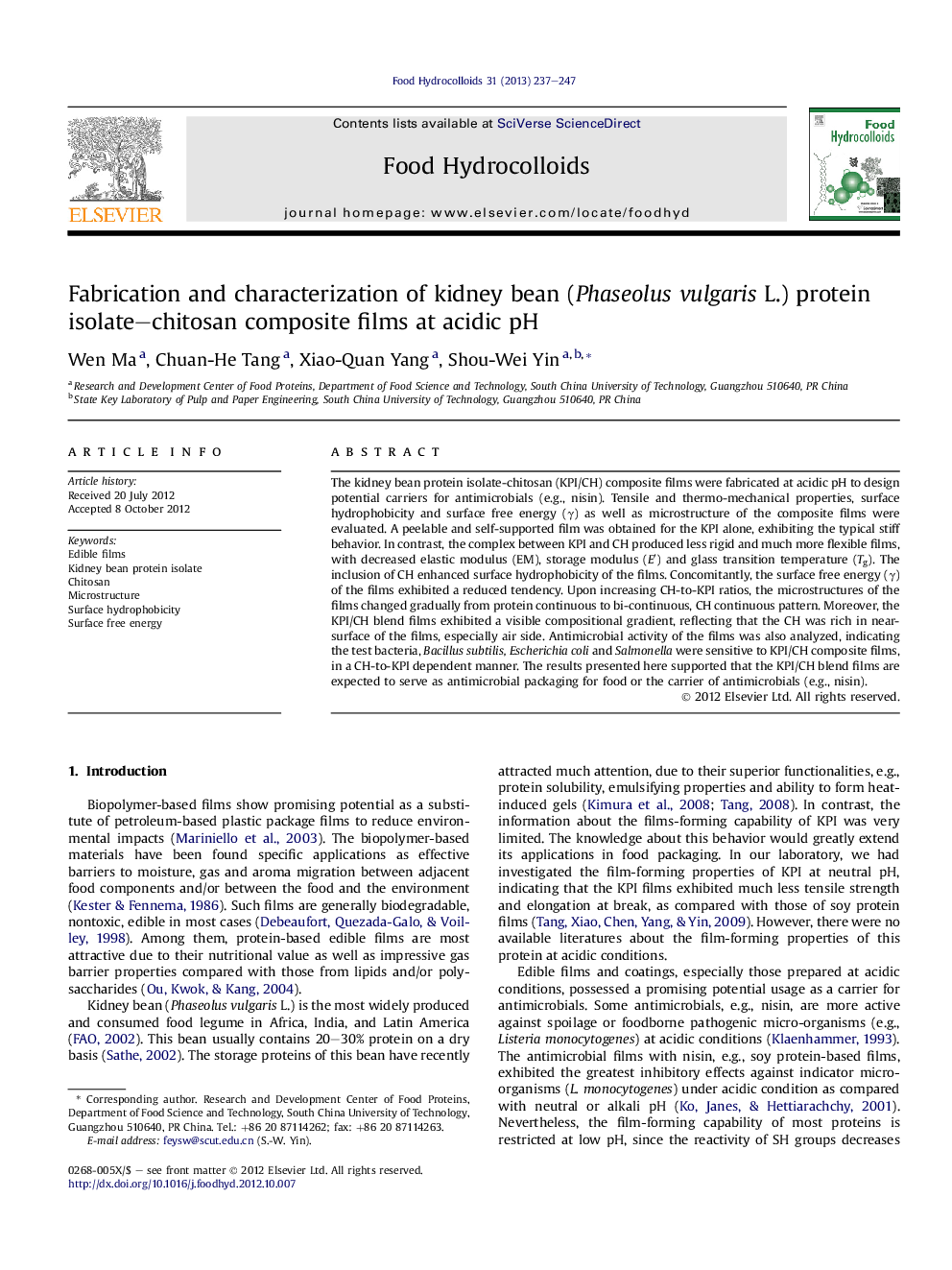| Article ID | Journal | Published Year | Pages | File Type |
|---|---|---|---|---|
| 605317 | Food Hydrocolloids | 2013 | 11 Pages |
The kidney bean protein isolate-chitosan (KPI/CH) composite films were fabricated at acidic pH to design potential carriers for antimicrobials (e.g., nisin). Tensile and thermo-mechanical properties, surface hydrophobicity and surface free energy (γ) as well as microstructure of the composite films were evaluated. A peelable and self-supported film was obtained for the KPI alone, exhibiting the typical stiff behavior. In contrast, the complex between KPI and CH produced less rigid and much more flexible films, with decreased elastic modulus (EM), storage modulus (E′) and glass transition temperature (Tg). The inclusion of CH enhanced surface hydrophobicity of the films. Concomitantly, the surface free energy (γ) of the films exhibited a reduced tendency. Upon increasing CH-to-KPI ratios, the microstructures of the films changed gradually from protein continuous to bi-continuous, CH continuous pattern. Moreover, the KPI/CH blend films exhibited a visible compositional gradient, reflecting that the CH was rich in near-surface of the films, especially air side. Antimicrobial activity of the films was also analyzed, indicating the test bacteria, Bacillus subtilis, Escherichia coli and Salmonella were sensitive to KPI/CH composite films, in a CH-to-KPI dependent manner. The results presented here supported that the KPI/CH blend films are expected to serve as antimicrobial packaging for food or the carrier of antimicrobials (e.g., nisin).
Graphical abstractSurface hydrophobicity and surface free energy (γT) of KPI/CH composite films: Effect of CH-to-KPI ratios. Panel A: Surface hydrophobicity. Panel B: Surface free energy (γ) and its components, the Lifshitz–van Der Waals (γLW) and Acid–Base (γAB).Figure optionsDownload full-size imageDownload as PowerPoint slideHighlights► The complex between KPI and chitosan produced hydrophobic composite films. ► The complex between KPI and chitosan produced flexible composite films. ► Surface free energy (γ) exhibited a reduced tendency upon increasing CH ratios. ► The films changed from protein continuous to bi-continuous, CH continuous pattern. ► KPI/CH blend films exhibited a visible compositional gradient.
